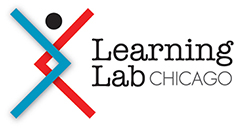Why We Should Encourage Children to Study STEM
When it comes to STEM, (science, technology, engineering and math) early education and focus is key. The years from birth through primary school are an essential time to foster growth in these areas. Nurturing learning in STEM at an early age can help children develop a positive attitude toward these subjects and career fields later in life.
One good example of age appropriate STEM education that parents can encourage is through Tinker Crate. This is a monthly project kit with hands-on projects for children and parents. These projects help to develop the creativity and curiosity that are necessary when it comes to studying STEM.
A report by the Institution of Engineers of Ireland in 2018, states that discovery and exploration are key pillars of early childhood education that overlap with core engineering traits and behaviors. Fostering critical thinking and problem solving from a young age will help children do better in STEM related subjects.
Despite the United States’ significant investment STEM education, the size and the of the STEM workforce continues to fail to meet demand. In 2012, there were around 7.4 million STEM positions in the U.S., and this number is expected to grow to 8.65 million by 2018. This is a great opportunity for the workforce of the next generation. Although employers throughout the U.S. are reporting a lack of skilled workers in these areas. With the knowledge that there is a lack of skilled people in the areas of STEM, it should encourage us to help our children become more educated in these areas.
Where there is creativity and curiosity, there is an eagerness to learn. When our children are eager to learn and study STEM the more likely they will be to make career choices based on these subjects later in life. “Individual characteristics and experiences associated with STEM-related activities shape the development of self-efficacy, interests, task values, and long-term life goals, which in turn, influence educational and career choices in STEM and non-STEM fields.” Source: https://bit.ly/2CHNm2c


